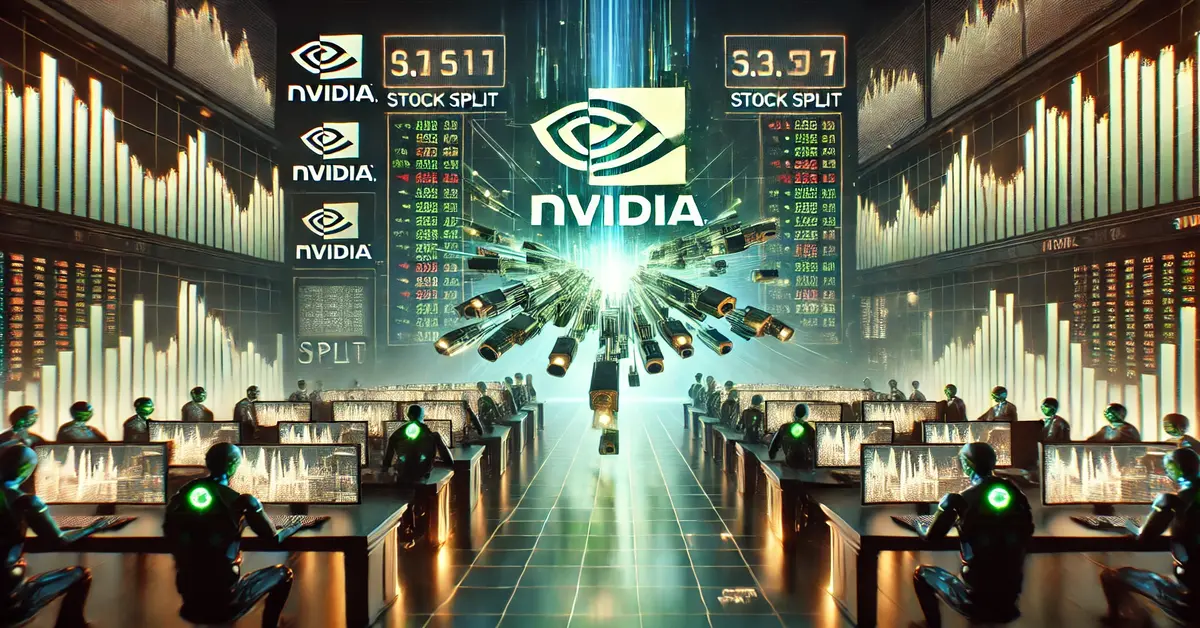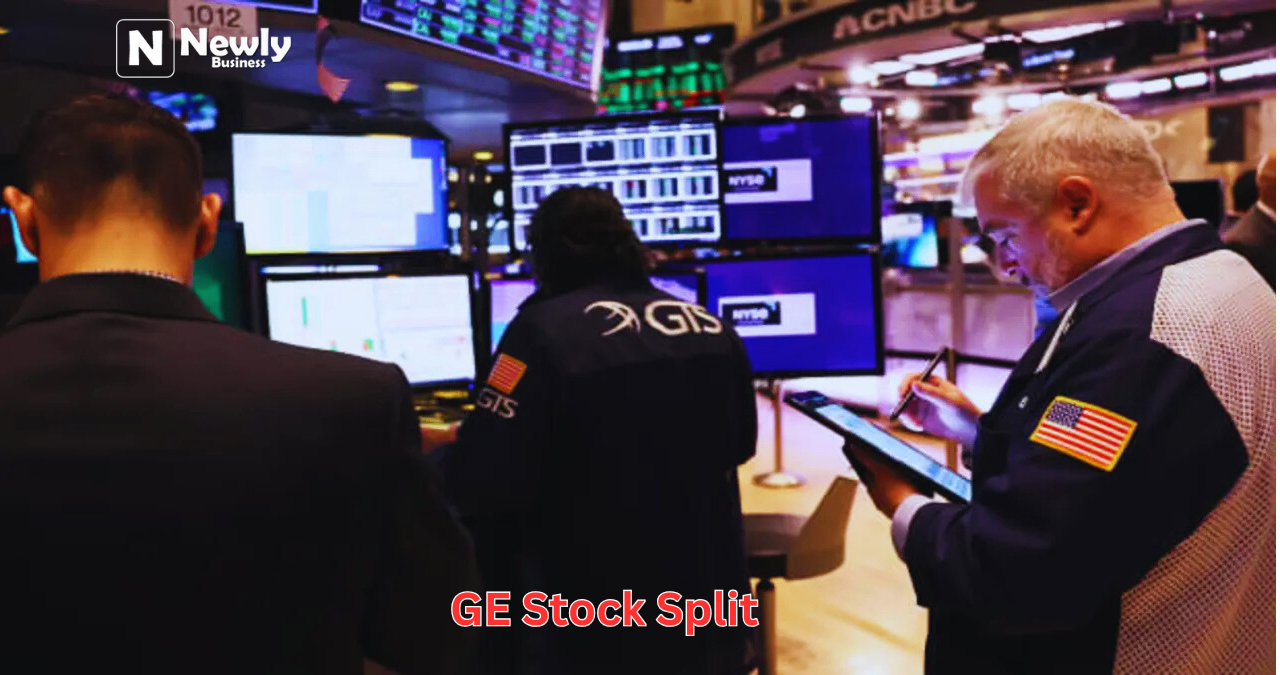Introduction
NVIDIA Corporation, or NVDA, has been a dominant force in the tech industry, particularly in the fields of graphics processing units (GPUs) and artificial intelligence (AI). Over the years, the company’s stock has seen exponential growth, making it a favorite among investors. One of the most talked-about topics surrounding NVDA is its potential stock split. Stock splits are often seen as a strategic move by companies to make their shares more accessible to a broader audience. In this article, we’ll explore what an NVDA stock split means, why it matters, and how it could impact investors. For more details about NVIDIA’s stock and corporate actions, visit NVIDIA’s official investor relations page.
A stock split occurs when a company divides its existing shares into multiple shares. For example, in a 2-for-1 stock split, each shareholder receives an additional share for every share they own, effectively doubling the number of shares outstanding. However, the price per share is halved, ensuring that the total market value of the company remains unchanged. For NVDA, a stock split could be a game-changer, especially given its high share price in recent years. Let’s dive deeper into the implications of an NVDA stock split and why it’s generating so much buzz in the investment community.

What Is a Stock Split and Why Do Companies Do It?
Before we delve into NVDA’s specific situation, it’s essential to understand what a stock split is and why companies choose to go down this path. A stock split is a corporate action where a company increases the number of its outstanding shares by issuing more shares to current shareholders. The primary goal of a stock split is to make shares more affordable for retail investors without changing the company’s overall market capitalization.
Companies often opt for stock splits when their share price becomes too high, making it difficult for smaller investors to buy even a single share. By splitting the stock, the company can lower the price per share, making it more accessible. Additionally, stock splits can create a psychological effect, making the stock appear more affordable and attractive, even though the underlying value of the company hasn’t changed.
For NVDA, a stock split could be particularly strategic. The company’s stock has seen tremendous growth over the years, driven by its dominance in the GPU market and its expansion into AI, data centers, and autonomous vehicles. As a result, the stock price has reached levels that may be out of reach for some investors. A stock split could help NVDA attract a broader investor base, increasing liquidity and potentially driving further growth.
The History of NVDA Stock Splits
NVIDIA has a history of stock splits, and understanding this history can provide valuable insights into the company’s approach to managing its stock price. The last time NVDA executed a stock split was in 2007, when the company implemented a 3-for-2 split. At the time, the stock was trading at around 130 per share, and the split brought the price down to approximately 87 per share. This move was aimed at making the stock more accessible to investors while maintaining its appeal in the market.
Since then, NVDA’s stock has experienced significant growth, driven by its innovative products and strategic expansions. As of recent years, the stock has been trading at much higher levels, often exceeding $500 per share. This has led to speculation about whether another stock split could be on the horizon. While the company hasn’t officially announced any plans for a split, the possibility remains a hot topic among investors and analysts.
Looking back at NVDA’s history, it’s clear that the company has used stock splits as a tool to manage its share price and appeal to a broader audience. If NVDA were to announce another stock split, it would likely follow a similar pattern, aiming to make the stock more accessible without diluting its value.
Why an NVDA Stock Split Could Be a Game-Changer
An NVDA stock split could have significant implications for both the company and its investors. For starters, it would make the stock more affordable for retail investors, potentially increasing demand and driving up the stock price. While a stock split doesn’t change the fundamental value of the company, it can create a positive perception in the market, leading to increased interest and trading activity.
Another potential benefit of an NVDA stock split is increased liquidity. When a stock is more affordable, it tends to attract a larger number of buyers and sellers, resulting in higher trading volumes. This can reduce bid-ask spreads and make it easier for investors to buy and sell shares without significantly impacting the stock price. For NVDA, this could mean greater stability and more efficient price discovery in the market.
Additionally, a stock split could enhance NVDA’s visibility and appeal in the market. As one of the leading tech companies, NVDA is already a well-known name, but a lower share price could make it even more attractive to individual investors and traders. This increased visibility could further solidify NVDA’s position as a top player in the tech industry.
The Potential Risks of an NVDA Stock Split
While there are many potential benefits to an NVDA stock split, it’s also important to consider the potential risks. One of the main concerns is that a stock split could attract short-term traders and speculators, leading to increased volatility in the stock price. While this can create opportunities for quick profits, it can also make the stock more unpredictable and risky for long-term investors.
Another risk is that a stock split could create unrealistic expectations among investors. Some may view a stock split as a sign of future growth, even though it doesn’t change the fundamental value of the company. If the stock fails to meet these expectations, it could lead to disappointment and a potential sell-off.
Finally, there’s the risk that a stock split could dilute the company’s earnings per share (EPS). While a stock split doesn’t change the overall market capitalization, it does increase the number of shares outstanding, which can reduce EPS. This could make the stock less attractive to value-oriented investors who focus on earnings metrics.
How Investors Should Approach an NVDA Stock Split
For investors, an NVDA stock split presents both opportunities and challenges. On the one hand, a lower share price could make the stock more accessible and attractive, potentially leading to capital gains. On the other hand, it’s essential to approach a stock split with caution and not let the hype overshadow the company’s fundamentals.
Before making any decisions, investors should carefully evaluate NVDA’s financial health, growth prospects, and competitive position in the market. While a stock split can create short-term excitement, it’s the company’s long-term performance that ultimately determines its success. By focusing on the fundamentals, investors can make informed decisions and avoid getting caught up in the noise surrounding a stock split.
Additionally, investors should consider their own financial goals and risk tolerance. A stock split may create opportunities for short-term trading, but it’s important to align any investment decisions with your overall strategy. Whether you’re a long-term investor or a short-term trader, staying informed and disciplined is key to navigating the potential impact of an NVDA stock split.
FAQs About NVDA Stock Split
1. What is an NVDA stock split?
An NVDA stock split occurs when NVIDIA Corporation divides its existing shares into multiple shares. For example, in a 2-for-1 stock split, each shareholder receives an additional share for every share they own, effectively doubling the number of shares outstanding while halving the price per share.
2. Why would NVDA consider a stock split?
NVDA might consider a stock split to make its shares more affordable for retail investors. A lower share price can attract a broader investor base, increase liquidity, and enhance the stock’s appeal in the market.
3. How does a stock split affect shareholders?
A stock split does not change the overall value of a shareholder’s investment. However, it increases the number of shares they own and reduces the price per share, making the stock more accessible and potentially increasing trading activity.
4. When was the last time NVDA split its stock?
The last time NVDA split its stock was in 2007, when the company implemented a 3-for-2 split. At the time, the stock was trading at around 130 per share ,and the split brought the price down to approximately 87 per share.
5. What are the risks of an NVDA stock split?
The risks of an NVDA stock split include increased volatility, unrealistic investor expectations, and potential dilution of earnings per share (EPS). It’s important for investors to focus on the company’s fundamentals rather than the hype surrounding a stock split.
Conclusion: The Future of NVDA and Stock Splits
In conclusion, an NVDA stock split could be a significant event for the company and its investors. By making the stock more affordable and accessible, a split could attract a broader range of investors and increase liquidity in the market. However, it’s important to approach a stock split with caution and not let the hype overshadow the company’s fundamentals.
As one of the leading players in the tech industry, NVDA has a strong track record of innovation and growth. Whether or not the company decides to split its stock, its long-term prospects remain promising. For investors, the key is to stay informed, focus on the fundamentals, and make decisions that align with their financial goals.
Ultimately, an NVDA stock split is just one piece of the puzzle. By taking a holistic approach to investing, you can navigate the potential impact of a stock split and position yourself for success in the ever-evolving world of tech stocks.




